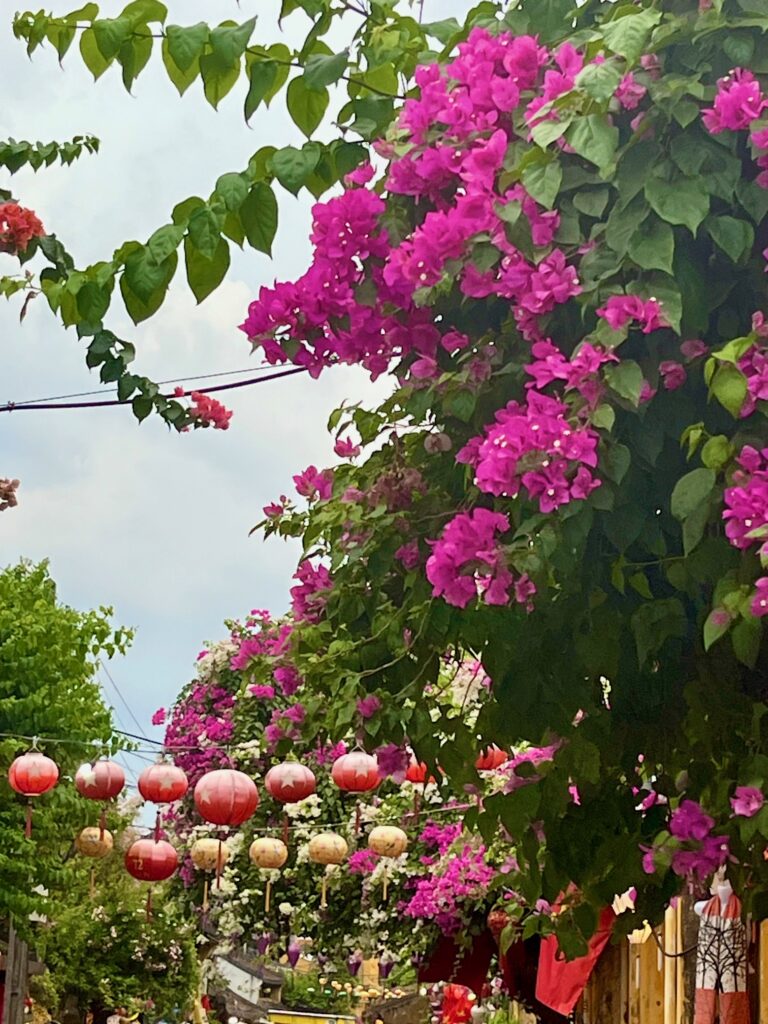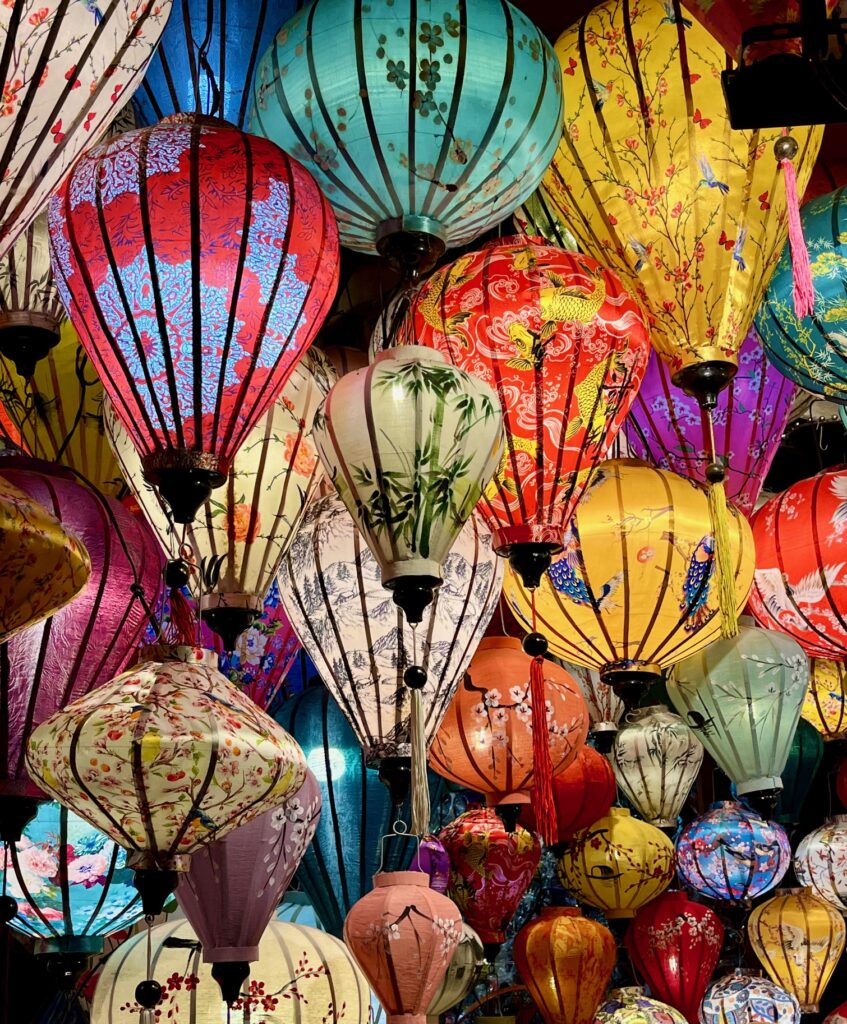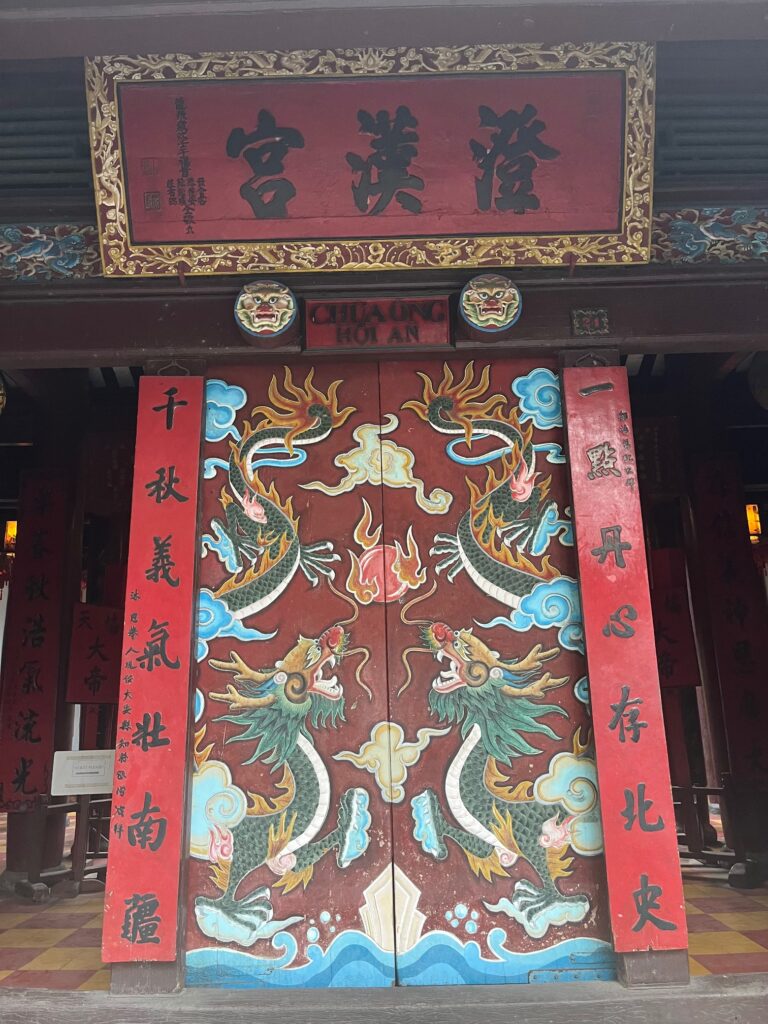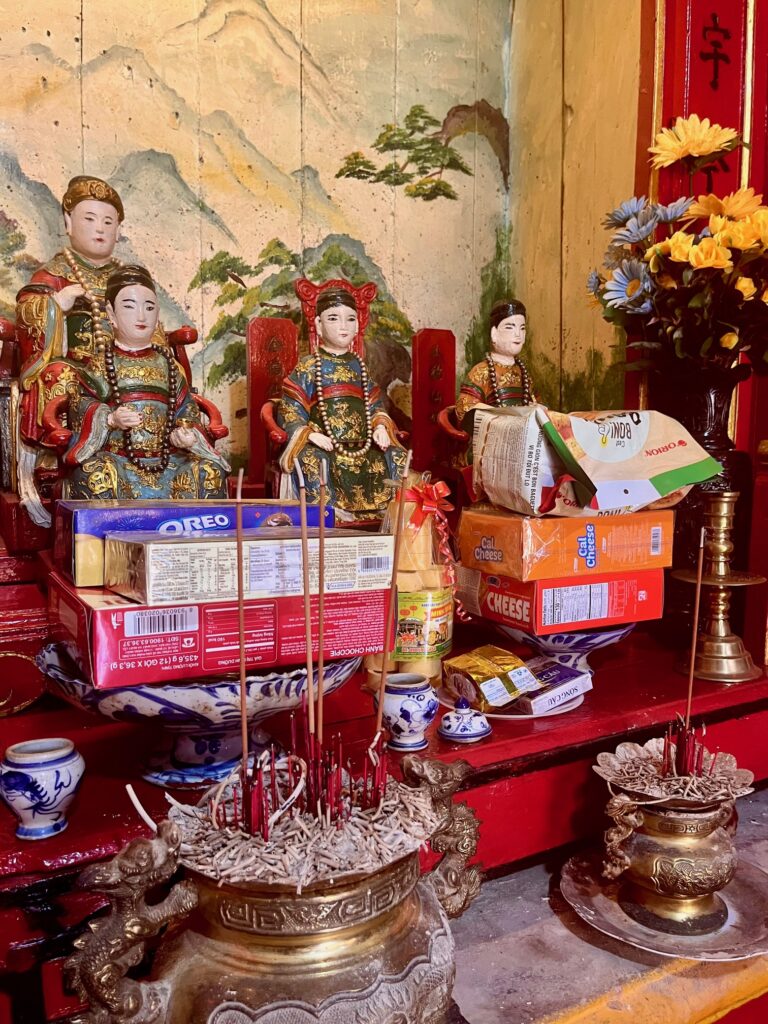Hoi An is one of those places that immediately feels special! With its glowing lanterns, riverside walks and allies, and centuries-old architecture, this tourist destination in central Vietnam feels a little suspended in time.
One of the things that makes Hoi An famous is it’s long history with laterns that were brought to Vietnam in the 16th century by Chinese and Japanese traders who settled in this thriving port town. They quickly became a symbol of prosperity and happiness, especially in Hoi An’s historic Old Town. As night falls, the streets light up with a kaleidoscope of silk lanterns…they literally are everywhere. A special tradition is floating a small candle-lit lantern down the Thu Bon River. Locals believe that releasing a lantern while making a wish brings luck and good fortune.
A Walk Through History
We have gotten into the habit of joining a morning walking tour on our first day in each new place – helps us get the lay of the land, hear great history from a local and meet fellow travelers. Today we joined our guide, Mi to explore Old Town, which is a UNESCO World Heritage Site. He shared how Hoi An was once one of the most important trading ports in Southeast Asia. You can see the influences of Chinese, Japanese, and European architecture — the iconic Japanese Covered Bridge, ancient merchant houses, and colorful temples.
This trip is proving to be a great history refresher! On the tour Mi gave a really great overview of more recent Vietnam history. After the Vietnam War ended in 1975, the country was reunified (no longer North and South divided) under a communist government. It was a difficult time economically, and Vietnam remained closed off for many years. But in 1989, the country began to reform and opened Vietnam to international travelers.
Today, while Vietnam remains officially a communist country, it has embraced capitalism in many ways. You can see it in the bustling markets, thriving small businesses, and signs of growth all over. Hoi An itself is a perfect example — full of entrepreneurial spirit, local craftsmanship, and thriving tourism.



Honoring the Ancestors: A Living Tradition in Vietnam
In Vietnam, honoring ancestors is a deeply rooted cultural tradition that plays a central role in daily life, even though around 80% of the population does not identify with an organized religion. Nearly every home and business has an ancestral altar, where offerings such as food, snacks, and beer are placed to show respect and maintain a spiritual connection with deceased loved ones. Lighting incense is a key ritual—once lit, it’s believed that the spirits have about 45 minutes, until the incense burns out, to enjoy the offerings. This practice reflects a strong belief in the continued presence of ancestors in the lives of the living. Regardless of the size of the home or business, these alters are literally sprinkled everywhere in Hoi An.
Custom Tailoring in Hoi An: A Timeless Craft and So Much Fun
Hoi An is renowned as the tailoring capital of Vietnam, home to over 500 tailor shops densely packed within its charming old town. This tailoring tradition dates back centuries, when Hoi An was a thriving port city on the Silk Route. Today, tailoring remains a defining feature of the town’s identity, offering travelers the unique chance to design their own wardrobe.
I wanted to take part in this iconic experience, so I had a couple of dresses and a pair of pants custom-made. The options were almost overwhelming—hundreds and hundreds of fabrics lined the shop walls, from silks to linens. Most tailors offer a 48-hour turnaround (but I saw full on men’s suits being made in 24 hours), which includes one or two fittings for adjustments. It’s fast, personal, and surprisingly affordable, and walking away with perfectly tailored clothes is not just about the final product—it’s about being part of a living tradition and a whole lot of fun!


